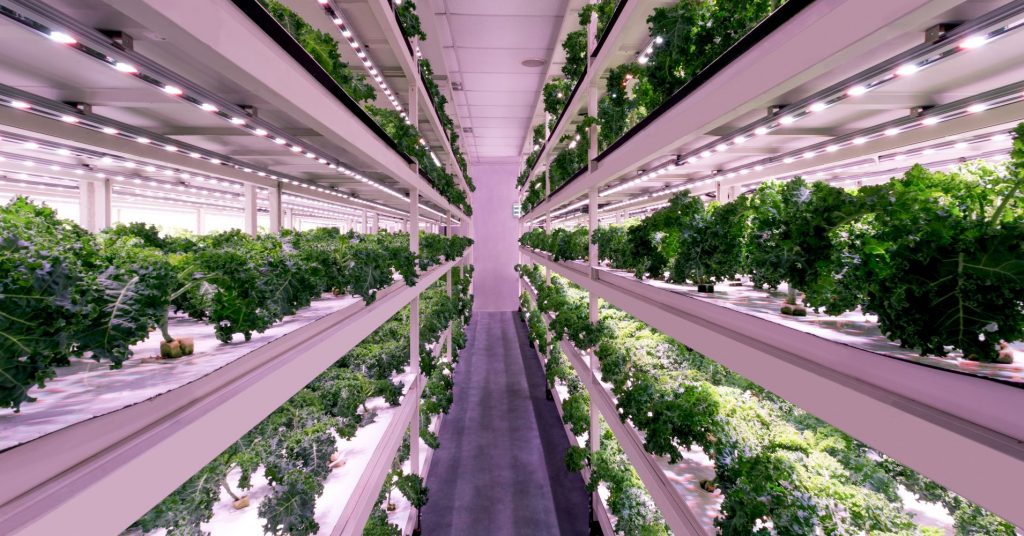We are all aware of the need to live more sustainably, especially with our growing population. We need to find ways to feed ourselves that have a smaller impact on the environment, and vertical farming is touted by many as being a way to produce more food more sustainably.
However, there are still lots of people who are sceptical about how vertical farming stacks up when compared with more traditional farming methods. We thought we’d delve into some of the benefits and drawbacks of vertical farming, and how Vitabeam can help to get the best out of vertical farming!
Benefits:
- Increased yield for the same footprint
In areas where land is at a premium, such as in more urban areas, vertical farming can be a great option for maximising yield by growing crops on multiple layers stacked on top of each other.
- Less reliance on weather
Shorter and more consistent grow cycles can be achieved, due to less variation due to seasonality than plants grown in greenhouses. Environmental variables such as temperature, humidity, hours of light and intensity of light can be carefully monitored and controlled to maintain optimum levels for maximum growth.
- Faster development of new crop varieties
Vertical farming is a good method of cultivation for developing new crop varieties. It takes around 2-3 years, compared with 7-10 years with traditional farming methods (Intelligent Growth Solutions, 2020)) due to the increased ability to respond to and control changes in pathogen presence and environmental variables in vertical farming.
Drawbacks:
- High water and power requirements
While higher yields are great, this comes at a cost. Water usage and energy usage in vertical farming can be high compared with greenhouse cultivation. This can be alleviated using a number of techniques, including recycling water and using energy-efficient LED lighting. However, it is important that a sustainable vertical farming system thinks carefully about how best to avoid potentially high water and power demands.
- Artificial lighting can’t replicate the Sun (or can it?)
Most current vertical farm setups are not suitable for all crops because the lights used don’t contain all the wavelengths found naturally in sunlight that plants need to thrive – this where Vitabeam comes in! Vitabeam’s VQe MaxStrip is a supplemental light bar that provides plants with the wavelengths of light that they can’t get from any other grow light. This supercharges the plants, increasing yield. An added bonus of Vitabeam’s Quantum energy (VQe) emitted by the MaxStrip is that it kills bacterial and mould pathogens, keeping food safe and clean without the need for chemicals or pesticides. The result is a healthier, stronger bigger plant, that is safer for the consumer, and more profitable for the grower – everybody wins!

The hope with vertical farming is that it will allow food to be produced sustainably all over the world. By engineering systems carefully, we can look forward to a future where any crop can be grown pretty much anywhere in the world, reducing the distance food has to travel to reach supermarket shelves, which in turn will reduce the carbon footprint of that food. Vitabeam wants to make this dream of a more sustainable future a reality – the future is brighter with Vitabeam!
